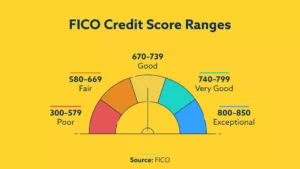Imagine you’ve been tracking a negative account for years awaiting the date it should drop-off your credit reports. You probably tossed around the amount of points your credit score will gain after the negative account drops-off.
The date arrives, you look at your credit report but discover the time has been extended. This could be a case of re-aging.
What is re-aging an account
Re-aging is a practice that involves changing the date of a negative account to make it appear more recent. This can have a detrimental effect on your credit report, as it may cause the negative information to remain for a longer period of time than allowed by law.
Essentially, re-aging turns back the clock on negative accounts extending the lifespan a debt stays on credit reports.
Why is re-aging an account illegal?
Negative credit has a time limit. According to the Fair Credit Reporting Act (FCRA), most negative credit information can remain on your credit report for 7 to 10 years.
Creditors can charge-off an account 180 days after the FIRST date you missed a payment. The date you became delinquent begins the “Aging” process and once the debt has matured 7.5 years, it must be deleted or “purged” from your credit report.
Here is a little background about the DOFD:
- The date of the first delinquency (DOFD) is the date a consumer first became 30 days late and no further payments were made on the account from that date forward.
- At this stage the DOFD usually leads to a creditor charging-off the delinquent account.
- The FCRA Compliance Date is the official beginning of first date of delinquency (DOFD) which cannot be changed once an account is charged-off.
- Once a charge-off or collection account reaches seven years the credit bureaus must purge the account and it will no longer appear on future credit reports.
It is illegal for a creditor or collection agency to change the “purge” date on a negative credit listing, causing it to remain on a consumer’s credit report longer than allowed by federal law.
The Fair Credit Reporting Act states:
“The 7-year period shall begin, with respect to any delinquent account that is placed for collection (internally or by referral to a third party, whichever is earlier), charged to profit and loss, or subjected to any similar action, upon the expiration of the 180-day period beginning on the date of the commencement of the delinquency which immediately preceded the collection activity; charge to profit and loss, or similar action.”
“Re-Aging” a delinquent account is a serious violation of the FCRA. Once the original creditor reports the FCRA Compliance Date to the credit reporting agencies, it is set in stone. This date cannot be changed or updated.
The time clock on the date the account FIRST went delinquent cannot change no matter how many times a charged-off debt is purchased, transferred or sold to collection agency. Basically, the “purge” date NEVER changes.
The charged-off account can bounce from collection agency to collection agency but according to the FCRA, the debt can only be reported for 7.5 years from the date of first delinquency (DOFD).
How to determine illegal re-aging
Get free copies of your credit reports for Experian, Equifax and Transunion. Do not use a tri-merged credit. Check each credit report for the date scheduled for removal of a negative listed item.
On the Experian report it should be a section that says “Status Details: This account is scheduled to continue on record until (date).”
On the Equifax report it should be a section that says “Date of 1st Delinquency” – add 7 years to that date.
On the Transunion report it should be a section that says “Estimated month and year that this item will be removed.
Here is what to look for:
- Look at the dates reported by the original creditor and the debt collector. Are the dates in sync with the FCRA Compliance date?
- The removal dates of the original account and the subsequent collection account, if any, should be the same. Sometimes they are a few months apart but they should be within the same year.
- If the two entries show different dates, there may be a “re-aging” issue. Check your credit reports closely to ensure accuracy.
What to do about illegal re-aging
If you believe that an account on your credit reports is not reflecting the correct “purge from” date, then you should file a dispute with the credit reporting agencies and request an immediate deletion.
If the original creditor or collection agency verifies that they believe the account is being reported accurately then take your complaint to the Consumer Financial Protection Bureau.
The complaint can be against the furnisher of information, the credit bureaus or both. Once contacted the furnisher of information or credit bureau will have to answer to the CFPB.
As a last resort, you can take legal action. If you can prove it you have a substantial cause of action against the original creditor, collection agency or credit bureaus.
More Credit Repair Resources
- How to Settle Your Debts – Find out if your debt with a collection agency can be settled for pennies on the dollar.
- Understanding Debt Validation – Request that a debt collector verify the amount and validity of a debt they claim is owed by you.
- Statute of Limitations on Debt – Your debt may be uncollectible. Review your State’s Statute of Limitations on how long you can be sued for an unpaid debt.
- 25 Credit Fix Tips – Get the best of our credit fix strategies you can easily do yourself.
- Best Credit Repair Companies – When you don’t have the time let a reputable credit repair company get your credit history back on track.












